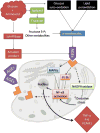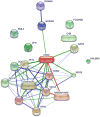A synopsis on aging-Theories, mechanisms and future prospects
- PMID: 27353257
- PMCID: PMC5991498
- DOI: 10.1016/j.arr.2016.06.005
A synopsis on aging-Theories, mechanisms and future prospects
Abstract
Answering the question as to why we age is tantamount to answering the question of what is life itself. There are countless theories as to why and how we age, but, until recently, the very definition of aging - senescence - was still uncertain. Here, we summarize the main views of the different models of senescence, with a special emphasis on the biochemical processes that accompany aging. Though inherently complex, aging is characterized by numerous changes that take place at different levels of the biological hierarchy. We therefore explore some of the most relevant changes that take place during aging and, finally, we overview the current status of emergent aging therapies and what the future holds for this field of research. From this multi-dimensional approach, it becomes clear that an integrative approach that couples aging research with systems biology, capable of providing novel insights into how and why we age, is necessary.
Keywords: Aging; Anti-aging therapies; Biochemistry; Biology; Senescence.
Copyright © 2016 Elsevier B.V. All rights reserved.
Conflict of interest statement
Figures










References
-
- Agostini A, Mondragón L, Bernardos A, Martínez-Máñez R, Marcos MD, Sancenón F, Soto J, Costero A, Manguan-García C, Perona R, Moreno-Torres M, Aparicio-Sanchis R, Murguía JR. Targeted cargo delivery in senescent cells using capped mesoporous silica nanoparticles. Angew Chem Int Ed. 2012;51:10556–10560. - PubMed
-
- Ahlqvist KJ, Suomalainen A, Hämäläinen RH. Stem cells, mitochondria and aging. Biochim Biophysi Acta(BBA)—Bioenerg. 2015;1847:1380–1386. - PubMed
Publication types
MeSH terms
Substances
Grants and funding
LinkOut - more resources
Full Text Sources
Other Literature Sources
Medical

